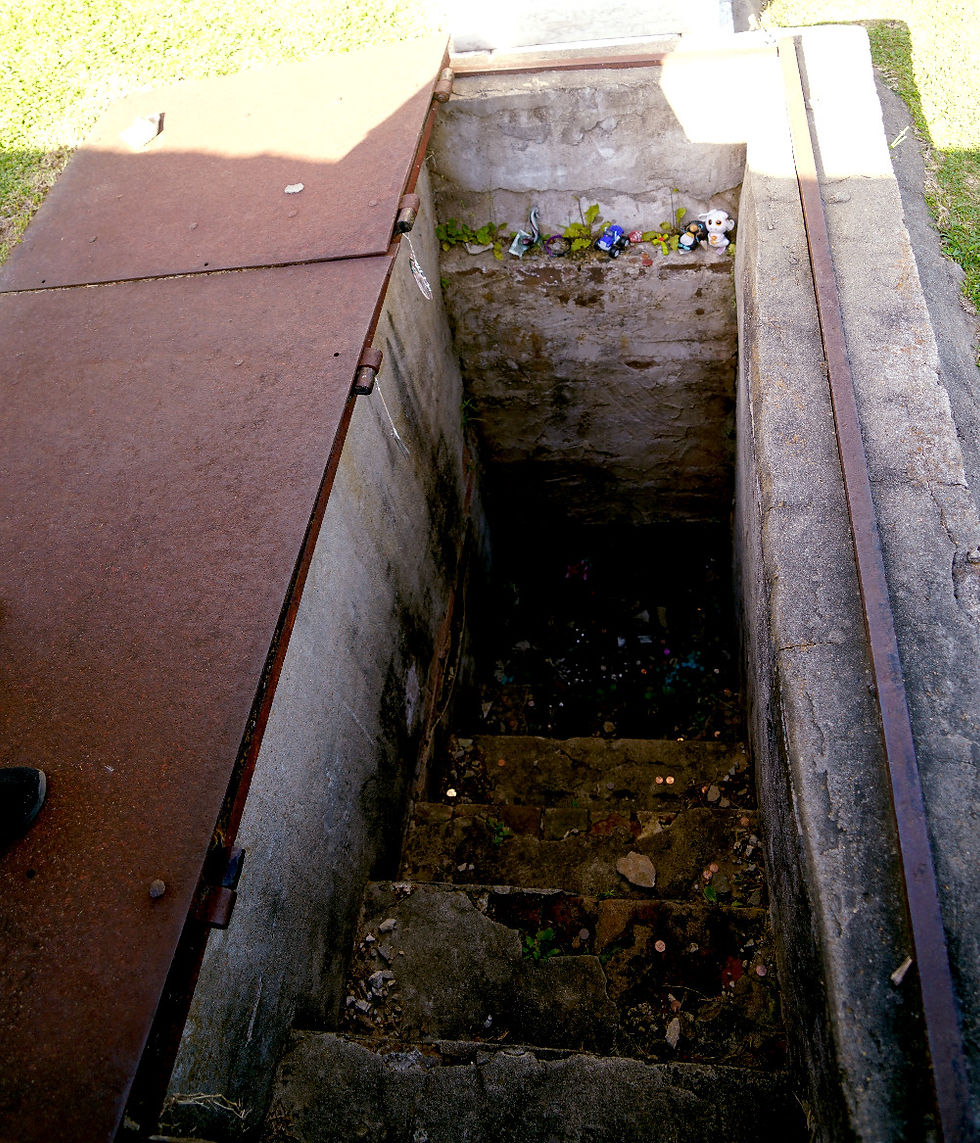Gone but not forgotten. A few last stories..
- Spencer
- May 7, 2018
- 3 min read
Here are a few remaining tombstones we found at the Natchez City Cemetery with interesting backstories:
A frightened little girl:


See the doorway behind the tomb of ten-year-old Florence Irene Ford (1861-1871)? She died of yellow fever. During her short life she was extremely frightened of storms and whenever one occurred she would rush to her mother to find comfort. Upon her death her mother was so struck with grief that she had Florence's casket constructed with a glass window at the child’s head. The grave was dug to provide an area, the same depth of the coffin, at the child’s head, with steps that would allow the mother to descend to her daughter’s level so she could comfort Florence during storms. To shelter the mother during storms, hinged metal doors were installed. In the mid 1950s a concrete wall was erected at the bottom of the stairway covering the glass window of Florence’s coffin to prevent vandalism.
Her inscription reads: "A bright and affectionate a daughter as ever God with his Image blest".
----
My Sweetheart - My Pal - My Wife

The tombstone is for L. H. Lawrence's wife Frances Fitzallen Reily (1878-1937). Notice the toolbox under the bench. After his wife's death, Mr. Lawrence would come to her grave each day after work. He brought a toolbox to hold tools to tidy his beloved's grave site.
He would stand on the road just outside the plot and say a prayer. Then he would step into the plot and carefully trim the grass and clean the tombstone while talking to his beloved. Many times he would be found in the early morning hours sleeping beside his wife’s grave. He spent so much time here, a bench was placed for him beside her grave. After his death his toolbox was encased in plastic and placed under the bench, where he often left it.
----
Mississippi’s Own Pioneer In Jazz :
Clarence “Bud” Scott, Sr., was the most famous African American musician in Mississippi during the early decades of the twentieth century. He led one of the most popular dance bands in the Mississippi-Louisiana region for several decades beginning around 1900. Scott (1876-1938), a lifelong Natchez resident, was renowned among both white and black audiences. Although the dances were segregated, the entire community could hear Scott when he sang from the balcony of the Natchez Confectionery.
He was one of the earliest musicians associated with the New Orleans jazz scene. He performed with James Reese Europe's Clef Club Orchestra at a historic 1912 concert at Carnegie Hall, and the following year worked with Europe's ensemble on the first jazz recordings on the Victor label.
----
Hopefully a life of good fortune

John Lee Sr. known as the Chinese gambler, died July 18, 1962, at the age of 70. He owned the Pick and Pay Restaurant in Ferriday, MS after first opening shop in town in 1925. The inscription, in Chinese on either side of his monument means, "Good Fortune". The dice on the monument have a seven on one side and an eleven on the other, while the cards are a spade royal flush. He died on the 11th day of the 7th month.
-----
A Man and his rocking chair

One Louisianian, Rufus E. Case, owned a plantation in Madison Parish. He asked to be buried in his favorite rocking chair facing Louisiana. He died Nov. 29, 1858, at the age of 34, and per his wishes, he was buried in a rocking chair facing Louisiana.
----
The Great American Steamboat Race:

This is the grave marker of Thomas Paul Leathers (1816-1896). He was the captain and owner of the famous steamboat Natchez. During that time, the famed Monarch of the Sea, the steamboat Robert E. Lee, was reputed to be the fastest commercial boat on the Mississippi. Captain Leather challenged Captain John W. Cannon to a race. For a time, Cannon resisted the invitation but during the summer of 1870 he relented by agreeing to race from New Orleans to St. Louis, a distance of 1,200 miles. The race quickly became an international sensation, attracting attention across the United States and Great Britain (having a fast boat attracted freight shipments and passengers).

The race began in New Orleans on June 30 at 5:00 p.m. The Robert E. Lee left its wharf as soon as the starting shot rang out. The Natchez departed five minutes later. The race remained close during the next several days but the Robert E. Lee eventually prevailed. It arrived in St. Louis at 11:20 a.m. on July 4 after three days, 18 hours, and 14 minutes. The Natchez followed six hours and 36 minutes later. It's a record that still stands today for a commercial vessel on the Mississippi.
Thomas Paul Leather John W. Cannon
If you'd like to read more about the Great American Steamboat Race click here.
-----
A beloved pet

Someone's beloved pet.













Comments